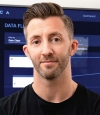All the times listed below are in Pacific Standard Time (PST).

9:00 am–9:15 am
Opening Remarks, Day 1
Program Co-Chairs: Joe Calandrino, Federal Trade Commission, and Lea Kissner, Twitter
9:15 am–10:45 am
Disinformation
Session Chair: Kate McKinley, Woven Planet
#Protect2020: An After Action Report
Chris Krebs, Founding Partner, KS Group
Chris Krebs, Founding Partner, KS Group

Chris Krebs served as the first Director of the U.S. Cybersecurity and Infrastructure Security Agency. With a long career as a cyber-policy expert in the private and public sector, Chris builds coalitions to address today's and tomorrow's challenges.
Around the World in 500 Days of Pandemic Misinformation
Can the Fight against Disinformation Really Scale?
10:45 am–11:15 am
Break with Refreshments
11:15 am–12:45 pm
Humans Are Hard
Session Chair: Antonela Debiasi, The Tor Project
Thinking Slow: Exposing Influence as a Hallmark of Cyber Social Engineering and Human-Targeted Deception
Burnout and PCSD: Placing Team At Risk
Leveraging Human Factors to Stop Dangerous IoT
12:45 pm–2:00 pm
Lunch
2:00 pm–3:30 pm
Hate and Encryption
Session Chair: Jon Callas, The Electronic Frontier Foundation
You Can’t Always Get What You Want / But You Get What You Need: Moderating E2EE Content
Content-Oblivious Trust and Safety Techniques: Results from a Survey of Online Service Providers
Rethinking "Security" in an Era of Online Hate and Harassment
3:30 pm–4:00 pm
Break with Refreshments
4:00 pm–5:00 pm
Make Attacks Hard
Session Chair: Swathi Joshi, Oracle
Detection Is Not Enough: Attack Recovery for Safe and Robust Autonomous Robotic Vehicles
Teaching an Old Dog New Tricks: Reusing Security Solutions in Novel Domains
5:00 pm–6:30 pm
Conference Reception
Sponsored by Google
9:00 am–9:05 am
Opening Remarks, Day 2
Program Co-Chairs: Joe Calandrino, Federal Trade Commission, and Lea Kissner, Twitter
9:05 am–10:35 am
Panel
Sex Work, Tech, and Surveillance
Moderator: Elissa M. Redmiles, Max Planck Institute for Software Systems
Panelists: Kendra Albert, Harvard Law School; Kate D'Adamo, Reframe Health and Justice; Angela Jones, State University of New York
10:35 am–11:05 am
Break with Refreshments
11:05 am–12:05 pm
Fairness and Inclusion
Session Chair: Kendra Albert, Harvard University
Crypto for the People (part 2)
Broken CAPTCHAs and Fractured Equity: Privacy and Security in hCaptcha's Accessibility Workflow
12:05 pm–1:20 pm
Lunch
1:20 pm–2:50 pm
ML Is Hard
Session Chair: Amanda Walker, Nuna
Contextual Security: A Critical Shift in Performing Threat Intelligence
Why Has Your Toaster Been through More Security Testing than the AI System Routing Your Car?
Neither Band-Aids nor Silver Bullets: How Bug Bounties Can Help the Discovery, Disclosure, and Redress of Algorithmic Harms
Camille Francois and Sasha Costanza-Chock, Algorithmic Justice League and Harvard Berkman-Klein Center for Internet and Society
2:50 pm–3:20 pm
Break with Refreshments
3:20 pm–4:50 pm
Privacy Is Hard
Session Chair: Nwokedi Idika, Google
When Machine Learning Isn’t Private
Auditing Data Privacy for Machine Learning
I See You Blockchain User, or Not! Privacy in the Age of Blockchains
5:00 pm–6:30 pm
Conference Reception
Sponsored by Netflix
9:00 am–9:05 am
Opening Remarks, Day 3
Program Co-Chairs: Joe Calandrino, Federal Trade Commission, and Lea Kissner, Twitter
9:05 am–10:35 am
Panel
Understanding Section 230
Moderator: Mike Masnick, Techdirt/Copia Institute
Panelists: Cathy Gellis; Kate Klonick, St. John's Law School; Adelin Cai, Sidequest
10:35 am–11:05 am
Break with Refreshments
11:05 am–12:05 pm
Money Talks
Session Chair: Melanie Ensign, Discernible, Inc.
Covenants without the Sword: Market Incentives for Security Investment
The Security Team at the Top: The Board of Directors
12:05 pm–12:50 pm
Fireside Chat
Fireside Chat with Sheera Frenkel
12:50 pm–2:05 pm
Lunch
2:05 pm–3:35 pm
Following the Rules
Session Chair: Wendy Seltzer, W3C
Healthcare Ecosystem: Security's Role in Helping HealthTech Find Its Way
The Global Privacy Control: Exercising Legal Rights at Scale
An Open-Source Taxonomy for Ex-ante Privacy
3:35 pm–3:50 pm
Closing Remarks
Program Co-Chairs: Joe Calandrino, Federal Trade Commission, and Lea Kissner, Twitter


























